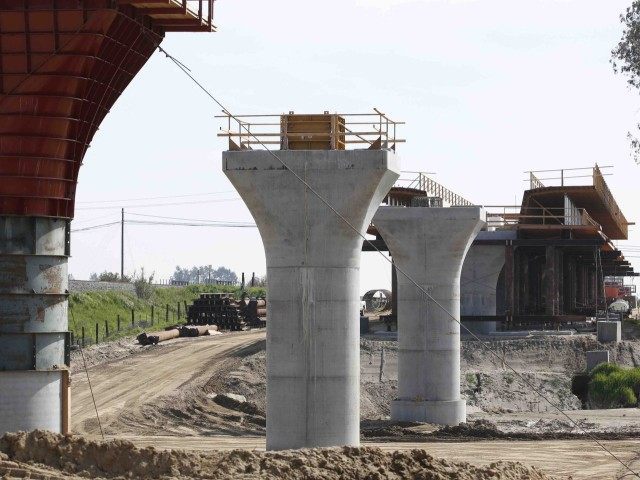A California Supreme Court ruling last week in favor of environmentalists opposing the state’s reopening of an abandoned lumber train may cost the state’s $46 billion over-budget high-speed rail project another four years, and $15 billion.
The California Legislature formed the North Coast Rail Authority and completed acquisition of the railroad in 1992, but then-Republican Governor George Deukmejian vetoed the project’s spending to start rail passenger and freight operations as a boondoggle. The project took off anyway in December 2010, when the Obama administration diverted $616 million from states that canceled their high-speed rail plans to California.
Friends of the Eel River and Californians for Alternatives to Toxics successfully challenged the state’s position that the wildly expensive and massively time-consuming California Environmental Quality Act (CEQA) was preempted by federal law for approvals involving rail operations.
The California Supreme Court verdict ends the federal government’s Interstate Commerce Commission’s Termination Act of 1995 (ICCTA) as the sole regulatory authority for all rail projects in California.
But the Supreme Court concluded regarding railroads: “the application of CEQA to NCRA would not be inconsistent with the ICCTA and its preemption clause.” The Court added, “we presume Congress does not intend to disrupt state self-governance without clear language to that effect.”
Every state rail project must now be compliant with CEQA’s notorious requirements designed by California’s environmental lobby to restrict building by directing “state and local government agencies to inform decision makers and the public about the potential environmental impacts of all proposed projects, including but not limited to remedial investigations, interim removals, removal action workplans, remedial action plans, initial permits, corrective action determinations, permit modifications, permit renewals closure plans, post-closure plans, variances and regulation development.”
Real estate construction finance expert Bruce Lawrance told Breitbart News that fully-complying with CEQA will take at least four years and dramatically increase the high-speed rail’s estimated cost of completion, which has already ballooned from $33 billion (when it was approved by voters in 2008) to about $79 billion last year.
Lawrance’s estimates for construction inflation are between 5.5 and 7.5 percent per year. A 4-year conservative estimate of 5.5 percent construction inflation compounded will increase CHSR costs to $95 billion — over $15 billion more.
The huge winners in the California Supreme Court decision may be the Central Valley Farm Bureaus of Madera and Merced counties, which filed an amicus curiae, or “friend of the court,” brief in the case, Friends of Eel River v. North Coast Railroad Authority.
Farmers and ranchers complained that for 30 years, CEQA has been used as a club to take their land through eminent domain and drive up their costs of operations. They argued that the California High-Speed Rail Authority’s construction and operation of the bullet-train line should not be able to,“evade the environmental and political accountability that form the very core of CEQA’s purposes.”
The link to the Supreme Court Judgment link is available at: S222472 Ct.App. The California High Speed Rail has not commented on possible revised cost or funding projections since the ruling.

COMMENTS
Please let us know if you're having issues with commenting.